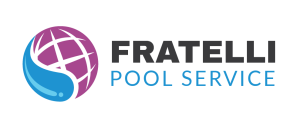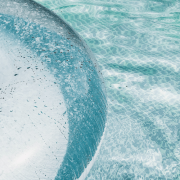Fratelli is Here Fighting For You!
Pool Service Prices Will Increase in 2021. But Fratelli Pool Service Will Keep The Same Prices Instead The Market.
What a challenging year, huh? We are always grateful to each one of you for entrusting us with your swimming pool and, consequently, the health of your family. We always work to exceed your expectations.
This year of 2020, in addition to being challenging in the health area, was also disastrous economically. All the products we use have increased in price considerably.
We never increase the monthly fee, and we have worked hard with our suppliers, doing everything in our power to maintain the monthly fee and still maintain the quality Fratelli Pool that you know and deserve.
Please check this article very well written by Orenda, as is the situation of our market.

Swimming pool service companies have traditionally ignored and absorbed gradual price increases, because nobody likes raising prices on customers for the same services rendered. Due to COVID-19 and other unforeseen circumstances, that is no longer possible in 2021. We are writing this article to inform homeowners about what has happened to our industry and how you can prepare for the increased costs of maintaining your swimming pool.
Covered in this article:
- Coronavirus and its impact on the swimming pool industry
- Normal price inflation
- Skyrocketing demand
- Manufacturing
- Shipping
- Severe chlorine shortage
- Trichlor plant burned down
- Imports from overseas
- Adaptation and alternatives
- Chlorine alternatives
- Secondary disinfection/oxidation systems
- Specialty chemicals
- Conclusion
Coronavirus and its impact on the swimming pool industry

The world was not prepared for the widespread lockdowns justified by COVID-19. While most swimming pool companies stayed busy as essential workers, the same cannot be said for all the manufacturing companies that make the equipment, tools, chemicals, and other supplies. That also applies to shipping companies, which have raised costs and delays are everywhere. These impacts from COVID-19 are soon to be felt by everyone down the supply chain.
Normal price inflation
Traditionally, prices for pool products–like chemicals–generally increase slowly, and stay at or below the US Dollar inflation rate. When manufacturing costs increase, they are not always carried on to the consumer each year, as most companies do not like raising their prices every single year. Increases may be every other year, and usually just a couple of percentage points. Pool service companies have also absorbed these small price increases without raising rates to homeowners, often because the price increases are small and not always noticed. Yet inflation is part of doing business, and we all must adapt to it.
Skyrocketing demand
With everyone stuck at home, the residential pool business surged. Demand for new pools, renovations, heaters and other upgraded equipment reached an all-time high. Along with more pools being built came a longer season. Pools in colder climates were opening earlier than normal…April instead of May, or March instead of April. Longer seasons mean more chlorine and other chemical usage too. The demand for just about everything related to backyard pools skyrocketed this year. This put stress on manufacturers to over-deliver during already-stressed times.
Manufacturing
As a pool chemical manufacturer, we at Orenda can speak openly on this topic. Coronavirus has fundamentally changed the manufacturing business at almost every level. From bottle lids to raw materials, delays and shortages have plagued every industry. Unless you manufacture hand sanitizer, cleaning spray or personal protective equipment (PPE) like face masks, many manufacturing facilities have put non-essential items on the back burner. This is not specific to just the pool industry, or even just in the United States. This is across the entire global economy. Coronavirus shifted everyone’s priorities. We at Orenda were fortunate to have enough material packaged for this season, and we did not have any delays in shipping, but not everyone was so lucky. And yes, much of that was luck. Nobody saw the lockdowns coming.
With increased demand and back-orders come increased costs for components. Again, think lids, bottles, labels, cardboard boxes, and even pallets.
Another aspect of the manufacturing issue has been the new safety protocol in place. Social distancing, PPE, plexiglass dividers, and disinfection practices have not only slowed down productivity, they have raised the cost of doing business. We see it everywhere we go: restaurants, grocery stores, airplanes, the gym, etc.. The amount of disinfectant wipes and spray is too much to quantify, and it all costs money. So all of us have to pay for that added cost of doing business. It trickles down. When factories have less people working together, they cannot produce goods as quickly or efficiently.
We want to reiterate that this is not a pool industry problem–this is affecting every industry and every level.
Shipping

Shipping companies are also much more expensive than usual. Not only are their distribution centers backed up because of social distancing and safety protocol, but the delays build upon other delays. In March 2020, some of the ports were closed, which backed up shipments from overseas, and it has continued to back up the supply chain. We were waiting more than six months to get things that should have taken only a couple of weeks.
Even if the products you were waiting for are made in the USA, some of the internal components may be from overseas. For instance, a type of fitting or valve inside a motor could be made in Taiwan, and therefore the product you’re trying to buy is unable to be completed and sent to you. This happened in the pool business with all sorts of products, from heaters to kids pool toys. Unfortunately, there was not much any of us could do to alleviate the pressure. But one thing is for certain: prices have gone up. Which brings us to the major pool-specific event of 2020, which actually had nothing to do with COVID-19.
Severe chlorine shortage
Disinfectants and sanitizers are in extremely high demand. This includes chlorine, which has found alternative uses in other industrial businesses for disinfecting surfaces. The demand on chlorine/sanitizers in general has been dramatic this year. Even though the lockdowns have relaxed and we are returning more toward “business as usual” in the United States, there is one product that will be in short supply for the foreseeable future. Trichlor. And with the shortage of trichlor comes a ripple effect that will increase demand on other items which will also raise prices. It’s simple supply-and-demand.
Trichlor plant burned down

Chlorine plant fire. Source: Getty Images (from Forbes.com)
In August 2020, one of the largest chlorine manufacturing plants in North America was destroyed by Hurricane Laura, and it caught on fire. The implications of this disaster cannot be understated. Prior to this incident the demand on chlorine was already near an all time high, thanks to the COVID-19 lockdowns. Sources in the industry estimate the plant was responsible for at least one third (1/3) of trichlor production in the country. Now, this production will be taken offline for the foreseeable future. Other manufacturers can only produce chlorine at a finite rate, and while they are ramping up production, it will not make up for the loss. Trichlor prices have nearly doubled since August, and are expected to increase even more next year. Be prepared for this, because it’s coming.
Imports from overseas
To fill the void, overseas manufacturers in Asia (primarily) will no doubt try to provide more trichlor to the U.S. market, but the prices will still be higher than normal and production can only increase so much before a plant reaches capacity. And thanks to COVID-19, chlorine plants were already at or near max capacity to begin with. To put this situation in perspective, the plant that burned down, according to Louisiana regulatory documents, produces about 115 million pounds of trichlor a year. It will be difficult to make that up.
Adaptation and alternatives
With such a chlorine shortage, we view this crisis as an opportunity to evolve as an industry. It’s a chance to improve and modernize our practices on how we treat swimming pool water. We at Orenda have been quite vocal about trichlor because of Cyanuric Acid (CYA). Minimal CYA is our fourth pillar of proactive pool care. CYA’s impact on chlorine strength is major, and its impact on the LSI is too. With trichlor comes the necessity to drain and dilute to keep CYA levels in check. In other words, a shortage of trichlor is painful in the short term, but might be a blessing in the long term.
Chlorine alternatives
Non-stabilized chlorine is ideal when coupled with less than 50 ppm of CYA. You can have optimal sunlight protection while not worrying about overstabilization and its consequences. So we as an industry must adapt, and look for alternatives to trichlor. The three most available options are liquid chlorine (sodium hypochlorite), cal hypo (calcium hypochlorite), and salt chlorine generator systems. Whatever you choose to switch to, be sure you keep sanitization as a priority, and adjust your other water chemistry parameters to be appropriate for the new type of chlorine. For instance, salt pools need to be maintained differently than cal hypo pools, and vice versa.
Secondary disinfection/oxidation systems
Supplementing chlorine with secondary disinfection/oxidation systems makes a lot of sense when chlorine is in short supply. It’s the natural next step to address the sanitizer demand. Commercial swimming pools have been utilizing secondary systems like Ultraviolet (UV) and Ozone for decades now, and they are growing in popularity for residential pools too. There are also Advanced Oxidation Process (AOP) systems, and a more recent secondary oxidizer–but not disinfectant–called Hyper-Dissolved Oxygen (HDO). All of these systems have their pros and cons, but one big benefit of each of them is they help chlorine be more efficient.
We are not here to opine on which systems are best for your pool, so we encourage you to do the research on your own if you are looking for a secondary system. We will say if you don’t already have one, they are almost always a worthwhile upgrade.
Specialty chemicals
 To further complement chlorine, specialty chemicals like phosphate remover, enzymes, clarifiers and chelants/sequestering agents take on much of the burden that faces chlorine. We have plenty of other articles that go in depth on these topics here:
To further complement chlorine, specialty chemicals like phosphate remover, enzymes, clarifiers and chelants/sequestering agents take on much of the burden that faces chlorine. We have plenty of other articles that go in depth on these topics here:
- Scale prevention
- Non-living organic and carbon management (Pillar 2)
- Phosphate Removal (Pillar 3)
- World class water clarity
In short, these alternatives directly reduce demands on chlorine and increase efficiency.
Conclusion
The world changed rapidly in 2020, and we all have to adapt. Unfortunately, at least until things return to normal (hopefully), prices will be much higher than normal as a consequence. Between manufacturing shortages, health and safety protocols and shipping delays, costs in all aspects of the supply chain are higher than ever thanks to COVID-19. This is not just in the pool business, it’s pretty much the entire global economy. Unique to pools, however, is the catastrophe of losing a major chlorine manufacturing plant, responsible for over a third of domestic trichlor production. That hits everyone hard, even those of us who do not manufacture chlorine. As they say on the news, we’re all in this together, and we wrote this article today because it’s the reality we are facing in our industry. So if your pool service company has to raise prices in 2021 (or late 2020), we hope this article adequately explains why. They simply do not have a choice if they want to remain in business.
You can read the original content from Orenda by clicking on the link: https://bit.ly/3opfddJ
















